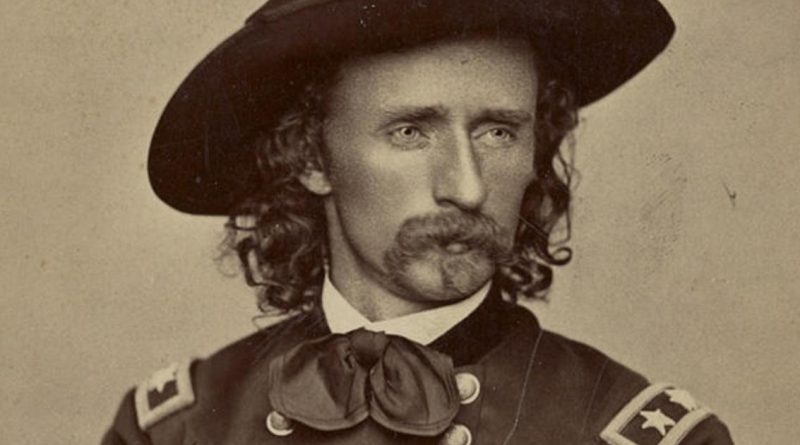August 4 in U.S. military history
1790: Congress approves Treasury Secretary Alexander Hamilton’s proposal to “build ten cutters to protect the new nation’s revenue,” establishing the Revenue Cutter Service – first of the predecessor services of the modern Coast Guard.
1846: Sailors and Marines from the USS Congress capture Santa Barbara, Calif. during the Mexican-American War.
1873: Lt. Col. George Custer (featured image) and his 7th Cavalry Regiment engage the mighty Sioux warriors, led by Sitting Bull and Crazy Horse, for the first time. Three years later, Custer and 200 of his troopers will perish when they clash again with Sitting Bull and Crazy Horse at the Little Big Horn River.
1914: As Germany crosses into Belgium and declares war on the United Kingdom, President Woodrow Wilson announces that the United States shall remain neutral.
1944: The Army Air Force conducts its first mission of the top-secret program, Operation APHRODITE. In theory, a pilot and co-pilot would fly the specially modified B-17 “baby”bomber towards the objective before parachuting from the aircraft, and another pilot in a nearby “mother ship” would use a television feed and remote control would drive the B-17 into the target. None of the flying bombs reached their targets — German V-1 rocket bases — as control issues led to multiple fatal crashes.
1950: At the southeastern tip of the Korean Peninsula, troops manning the 140-mile Pusan Perimeter halt the North Korean advance in the first major engagement of the Korean War. During the battle, a Sikorsky R-5 helicopter of the Air Force’s 3rd Air Rescue Squadron evacuates PFC Claude C. Crest, Jr., marking the first time a wounded soldier is medevaced from the battlefield. Helicopters will fly out over 21,000 wounded troops by war’s end.
1964: Less than 48 hours after North Vietnamese torpedo boats attacked the USS Maddox, the destroyer USS Turner Joy detects what appears to be – on radar – a small watercraft approaching the destroyer. For two-and-a-half hours, Maddox and Turner Joy – accompanied by aircraft from USS Ticonderoga – fire at the supposed targets.
In response, aircraft from the carriers Ticonderoga and Constellation attack North Vietnamese patrol boat bases and the oil storage facility at Vinh. Within days, Congress would pass the Gulf of Tonkin Resolution, leading to full-scale conflict in Vietnam.
